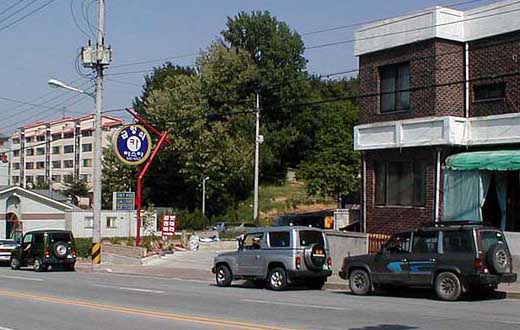

|
South Korea was literally rebuilt after the Korean war truce. So, unlike European cities with
their narrow medieval streets, Korea has modern roads. But they're filling up fast. As Korea's prosperity has grown, so has its vehicle population. As of March, 2002, the Korea Automobile Manufacturers Association said that Korea's vehicle population density was almost 270 vehicles for each 1000 South Koreans. That's an increase of more than 2500% from 1980! By 2012 it was 438 per thousand, a 62% jump in a decade. That's still less than the US rate of about 760 per thousand, but Korea is catching up fast. KAMA figures that vehicle ownership in Korea will grow at 5.2% per year. They're expecting Korea to have 670 vehicles per thousand people by 2020. That's over 33 million. Korea is about the size of Indiana. Where will they put them all? To make the space problem worse, Koreans are following America's lead. They're buying big, fuel-guzzling SUVs and vans, in spite of Korea's relatively high fuel prices. Why? Partly because of a change in the way South Korea figures tax. In Korea, vehicle taxes and usage fees have always been based on the vehicle's engine size. Until the late 1990s, tax rates increased rapidly as engine size increased. The Korean government figured that a Korean who could afford a big gas-guzzler could afford to pay more tax, and ought to cover some of the social costs of bigger vehicles (more pollution, more traffic congestion, more death and injury from accidents). But in 1999, all that changed. In some cases, it now costs less in taxes to own an SUV than to own a regular passenger car. How did that happen? Partly it was Korean automakers' lobbying when they saw how much profit their US counterparts were making on SUVs. But it's also partly down to the US government. In 1998, the US Trade Representative issued a memorandum of understanding, based on negotiations between the US and Korean govermnemts. It was supposed to make big gas guzzlers -- the US automakers' specialties -- cheaper in Korea.Well, it worked. Thanks to lower taxes, cheaper fuel, Western influence, and Korea's fiscal recovery, the number of SUVs on Korea's roads ballooned 80 percent in just one year, from 1999 to 2000. In 2000, Korea's roads were handling 251,000 SUVs. In 2003 alone, almost 400,000 more SUVs joined them. Just one little problem. By and large, they weren't, and still aren't, Ford Explorers, Chevy Blazers, and Jeep Cherokees. Just about all of these SUVs have Korean names on them - Hyundai, Kia, Daewoo, Ssangyong. All these years later, the US trade representative's memorandum of understanding hasn't boosted the number of US-made vehicles on Korean roads in any significant way. It sure pumped up fuel use, though. Korea's calendar year 2000 crude oil imports were up almost 37% over 1999 levels. Even though Korea's economy wasn't exactly hitting on all cylinders, oil use for transportation increased nearly another 5% in 2002. It's tough to see how a nation which imports virtually all of its petroleum, and which has a city (Seoul) with some of the world's dirtiest air, can keep on this way forever. The government raised taxes on the fuels these big boxes used, hoping to reduce demand. From 2000 to 2014, Diesel fuel more than tripled in price. But it was too late. Koreans like their SUVs and vans. They're literal status symbols. They're willing to pay high fuel prices to drive them. The other problem with the fuel-tax approach is that fuel price hikes affect everybody, rich and poor. On the other hand, the now-abandoned big-vehicle taxes mostly hit the wealthy. So it goes: Korea's air gets dirtier, the roads get more clogged, parking gets tougher, and the gap between rich and poor gets wider.
|